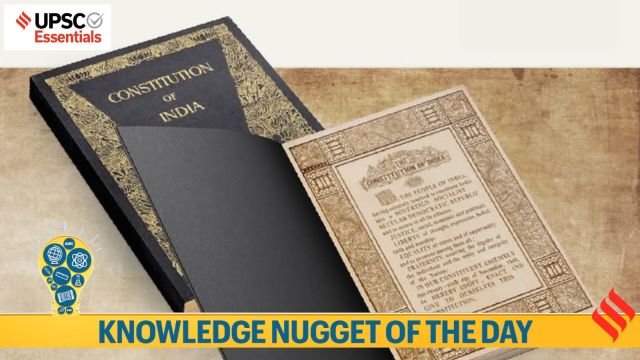
Why in the news?
Recently, in a letter to Tripura Chief Minister Dr Manik Saha, the Kokborok Sahitya Parishad sought the inclusion of the Kokborok language in the Eighth Schedule of the Constitution. The tribal literary body stated that the script for the Kokborok language can either be Bengali or Devanagari.
Story continues below this ad
Notably, earlier on International Mother Tongue Day (February 21), at Delhi’s Jantar Mantar, Dr Santosh Patel and a group of supporters gathered to demand the inclusion of Bhojpuri in the Eighth Schedule of the Indian Constitution. Spoken by millions of people across several countries, Bhojpuri holds constitutional status in both Mauritius and Nepal, but it remains constitutionally unrecognised in India. In the context of rising demands for inclusion of various languages in the Eighth Schedule of the Indian Constitution, let’s understand what this schedule is all about and other important aspects related to it.
Key Takeaways :
1. The Eighth Schedule to the Constitution of India lists the languages officially recognised by the Government of India. Articles 344(1) and 351 of the Constitution contain provisions relating to the Eighth Schedule.
2. Article 344 (1) provides for the constitution of a Commission by the President on expiration of five years from the commencement of the Constitution and thereafter at the expiration of ten years from such commencement, which shall consist of a Chairman and such other members representing the different languages specified in the Eighth Schedule to make recommendations to the President for the progressive use of Hindi for official purposes of the Union.
3. Article 351 of the Constitution provides that it shall be the duty of the Union to promote the spread of the Hindi language to develop it so that it may serve as a medium of expression for all the elements of the composite culture of India and to secure its enrichment by assimilating without interfering with its genius, the forms, style and expressions used in Hindustani and in the other languages of India specified in the Eighth Schedule, and by drawing, wherever necessary or desirable, for its vocabulary, primarily, on Sanskrit and secondarily on other languages.
Story continues below this ad
4. As of May 2025, 22 languages have been classified under the Eighth Schedule to the Constitution. Initially, however, the Eighth Schedule included 14 languages: Assamese, Bengali, Gujarati, Hindi, Kannada, Kashmiri, Malayalam, Marathi, Oriya (renamed to Odia in 2011), Punjabi, Sanskrit, Tamil, Telugu, and Urdu.

5. These 14 languages were selected from among the hundreds identified by George A Grierson in his Linguistic Survey of India which catalogued over 700 linguistic varieties across the subcontinent as early as 1927.
6. Over time, the Schedule expanded beyond the original 14 languages to include Bodo, Dogri, Konkani, Maithili, Manipuri, Nepali, Santhali, and Sindhi, bringing the total to 22.
7. Sindhi was added through the 21st Amendment Act of 1967; Konkani, Manipuri, and Nepali were added by the 71st Amendment Act of 1992; and Bodo, Dogri, Maithili, and Santhali were included through the 92nd Amendment Act of 2003.

Story continues below this ad
8. Interestingly, English — despite its widespread use and role in official spheres — has never been part of the Eighth Schedule.

What is the criteria to select languages to the Eighth Schedule?
1. The Constituent Assembly did not lay down any formal criteria for the inclusion of languages in the Eighth Schedule. However, from time to time, efforts have been made by various committees to define clearer criteria for inclusion.
2. The Ashok Pahwa Committee (1996) proposed that a language could be included in the Eighth Schedule if:
(i) it was an official language in at least one state;
Story continues below this ad
(ii) a significant portion of a state’s population spoke it;
(iii) it was an independent language rather than a dialect or derivative of one already listed;
(iv) it had recognition from the Sahitya Akademi; and
(v) it possessed a well-defined and developed literary tradition.
3. Later, the Sitakant Mohapatra Committee (2003) added more specific benchmarks. It recommended that a language must have at least 5 million speakers, based on census data from the previous three decades, to qualify as being spoken by a substantial population. The language should also serve as a medium of instruction at least up to the secondary level, preferably extending to the university level. Additionally, its script—whether indigenous, borrowed from a dominant regional language, or using Devanagari—should have been in established use for at least 50 years.
4. Notably, despite these efforts, no official standard has been adopted for selecting languages for the Eight schedule. The Ministry of Home Affairs confirms this position: “As the evolution of dialects and languages is dynamic, influenced by socio-eco-political developments, it is difficult to fix any criterion for languages, whether to distinguish them from dialects, or for inclusion in the Eighth Schedule to the Constitution of India.”
Story continues below this ad
Benefits of inclusion of language in eight schedule
The benefits of being listed in the Eighth Schedule are both symbolic and practical. Such as:
(i) Languages listed in the Eighth Schedule are eligible for translation services in Parliament if spoken by any member,
(ii) They are included as options in the Indian language paper for the Union Public Service Commission (UPSC) examinations,
(iii) Receive developmental funds from the central government, as language falls under the Concurrent List.
Story continues below this ad
BEYOND THE NUGGET: Classical languages
1. Last year, ‘Classical Language’ status was granted to Marathi, Pali, Prakrit, Assamese, and Bengali, and it brought the total number of officially designated classical languages to 11. Previously, only six languages held the ‘Classical’ status: Tamil (2004), Sanskrit (2005), Kannada (2008), Telugu (2008), Malayalam (2013), and Odia (2014).
(Notably, among all the classical languages, Prakrit and Pali are the two classical languages that are not mentioned in the eighth schedule of the Indian Constitution.)
2. Classical languages are considered the custodians of India’s ancient and profound cultural heritage. They preserve the rich history, literature, and traditions of their respective communities. The government grants this status to languages to honor and safeguard the linguistic milestones of India’s diverse cultural landscape.
3. In October 2004, the Centre decided to create a new category of languages as “classical languages”. On October 12, 2004, Tamil became the first Indian language to receive “classical” status due to its high antiquity and rich literary tradition.
Story continues below this ad
Post Read Questions
(1) The Constitution (71st Amendment) Act, 1992 amends the Eighth Schedule to the Constitution to include which of the following languages? (UPSC 2024)
1. Konkani
2. Manipuri
3. Nepali
4. Maithili
Select the correct answer using the code given below:
(a) 1, 2 and 3
(b) 1, 2 and 4
(c) 1, 3 and 4
(d) 2, 3 and 4
(2) The Ashok Pahwa Committee (1996) and Sitakant Mohapatra Committee (2003) were associated with:
(a) Reforms in the Lok Sabha
(b) Caste Census
(c) Eighth Schedule
(d) Delimitation
(3) Consider the following languages:
1. Manipuri
2. Bodo
3. Kashmiri
What is the correct chronological order of these languages as they were included in the eighth schedule of the Constitution of India?
(a) 3—2—1
(b) 1—2—3
(c) 2—1—3
(d) 3—1—2
Subscribe to our UPSC newsletter. Stay updated with the latest UPSC articles by joining our Telegram channel – Indian Express UPSC Hub, and follow us on Instagram and X.
🚨 Click Here to read the UPSC Essentials magazine for May 2025. Share your views and suggestions in the comment box or at manas.srivastava@indianexpress.com🚨





































